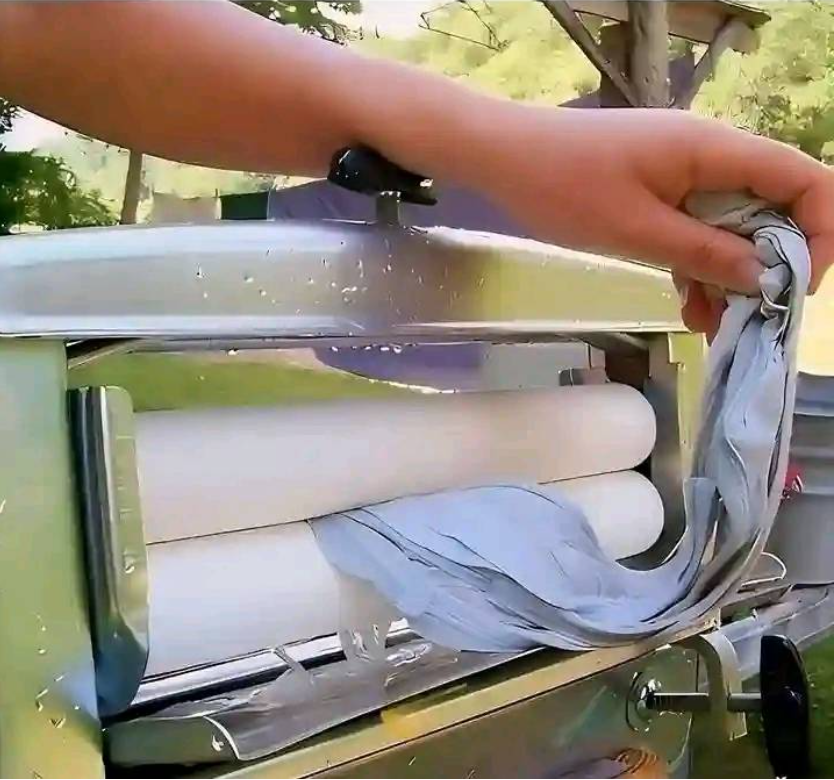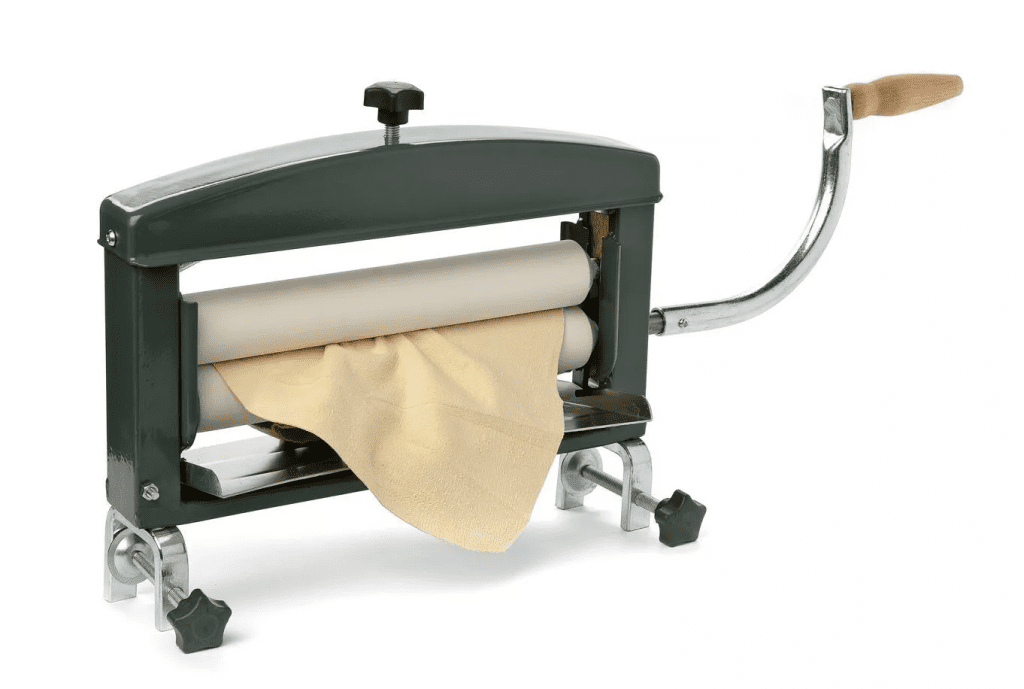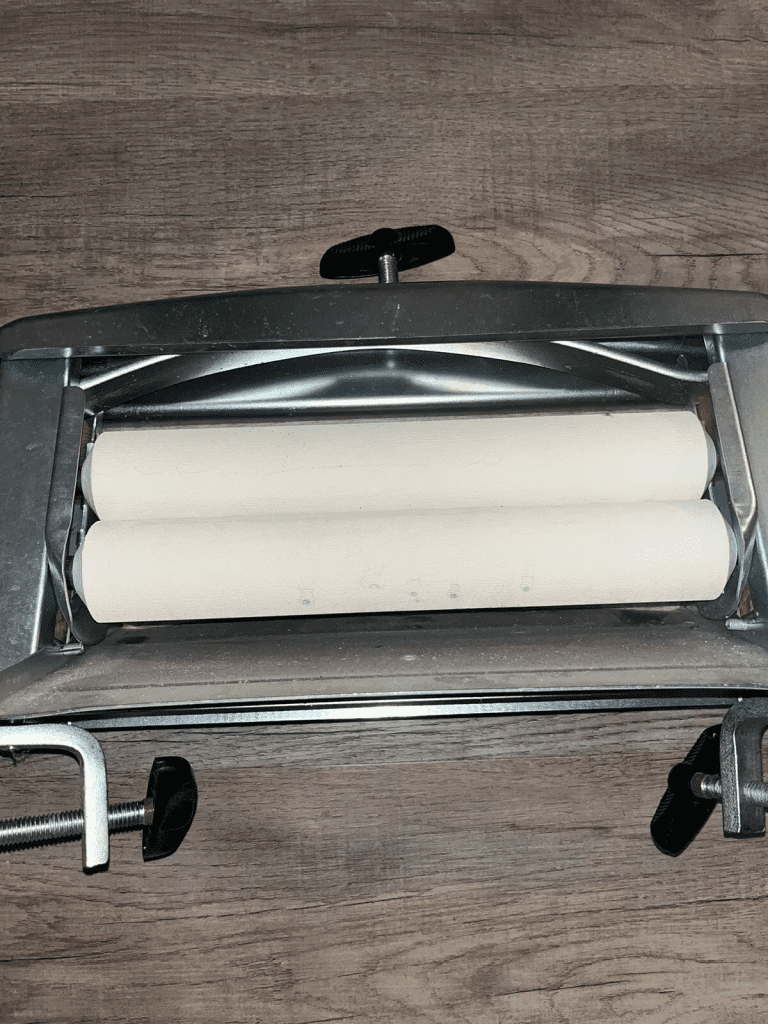The mangle has been an essential tool for centuries, serving various purposes, from laundry care to artistic expression. Although its presence in households has dwindled over time, it remains a significant part of both commercial laundries and creative spaces. In this article, we will dive into the history, modern uses, and even some surprising roles this once-common tool continues to play.
A Brief History of the Mangle

The mangle, originating from the Dutch word mangelen (meaning “to mangle”), has a rich history stretching back to the late 16th century. Originally a mechanical laundry tool, the mangle consisted of two rollers designed to press or flatten clothing, tablecloths, and other laundry items. It was initially hand-cranked but later adapted for electric use, making it a more efficient and convenient tool in the modern age.
Early mangles were primarily constructed from wood, featuring two rollers that could be powered manually. As industrialization took hold, steam-powered versions began appearing in commercial laundries. Eventually, electric mangles made their way into homes, making the process of pressing linens and clothes far more efficient than ironing.
But the mangle wasn’t just limited to laundry; the innovation continued to spread across different industries and purposes, which we’ll explore below.
The Role of Mangling in Laundry Care
While the spin cycle in modern washing machines has made the traditional mangle less necessary, the tool is still appreciated in large-scale commercial laundries. For instance, hotels and hospitals often rely on mangles to quickly and efficiently press large flat items like bed sheets and tablecloths. The mangle offers a key advantage over conventional ironing: speed. It allows the operator to press several items in a fraction of the time it would take with a traditional iron.
Additionally, mangles contribute to fabric maintenance. Mangling smooths out the surface fibers of textiles, reducing their ability to attract dust and dirt. This means that mangled fabrics stay cleaner for longer, a valuable trait when dealing with items like linens that are washed frequently.
How Mangling Improves Textile Longevity
One lesser-known benefit of using a mangle is how it enhances the durability of fabrics. When fabrics are washed and dried, the fibers tend to fray and loosen, making them more prone to wear and tear. By passing the textiles through a mangle, the rollers press the fibers back into place, resulting in a tighter, smoother surface. This not only gives the fabric a polished appearance but also extends its lifespan.
Moreover, mangling helps maintain the luster of specific fabrics, particularly linens. Historically, the mangle was employed to impart a glossy finish to buckram and fustian cloth, ensuring that these materials retained their visual appeal. This process continues to be appreciated by those who value the longevity and look of their fabrics.
The Mangle in the Modern World: Limited but Not Forgotten
While most households have traded in their mangles for electric dryers, the tool still plays a pivotal role in industrial laundry settings. Commercial laundries, especially those dealing with large volumes of linens, often rely on mangles to reduce energy consumption and increase productivity.
Interestingly, the mangle has remained more prevalent in certain countries than others. For example, in some parts of Europe, small domestic mangles can still be found in homes. These devices are particularly useful for pressing items like bed linens and large towels that are cumbersome to iron.
However, in North America, the domestic use of mangles has almost entirely disappeared. Modern washing machines and dryers have made the mangle redundant for most households. Yet, for those who run businesses that require pressed linens, or for the occasional domestic perfectionist, the mangle remains a vital tool.
Mangles and Their Surprising Artistic Applications

Beyond the laundry room, the mangle has found new life in the world of art. Artists, particularly those working with printmaking techniques, have repurposed old mangles as an affordable alternative to expensive printing presses. The design of a mangle—specifically its rollers—closely mirrors that of traditional printing presses, making it an ideal stand-in for etching or lithographic work.
Australian artist Barbara Brash is one of the most notable examples of someone who utilized a mangle in her artistic practice. By adjusting the mangle to accommodate a metal plate, she was able to create high-quality prints without the need for a professional printing press.
This creative use of the mangle underscores its versatility and enduring relevance. Although it might seem like an outdated piece of equipment, in the right hands, a mangle can be transformed into an entirely new tool with its own artistic possibilities.
The Future of the Mangle: Niche but Necessary

While the mangle may no longer be a household staple, it still holds a place of importance in several industries. Commercial laundries, artists, and certain textile enthusiasts continue to rely on this classic tool for its efficiency and unique capabilities. Its ability to press fabrics quickly and effectively makes it an invaluable resource in settings where time and precision are critical.
Looking ahead, it’s unlikely that mangles will make a widespread return to homes, but their role in niche markets is secure. Whether you’re running a busy laundry service or creating beautiful prints, the mangle’s simplicity and functionality remain unmatched.
Conclusion
The mangle, a mechanical wonder that started as a humble laundry tool, has evolved far beyond its original purpose. From preserving the life of textiles to serving as an artist’s printing press, the mangle has adapted over the centuries to meet changing needs. Although it’s no longer common in everyday homes, its role in commercial laundries and artistic circles ensures that the mangle’s legacy will continue for years to come.


